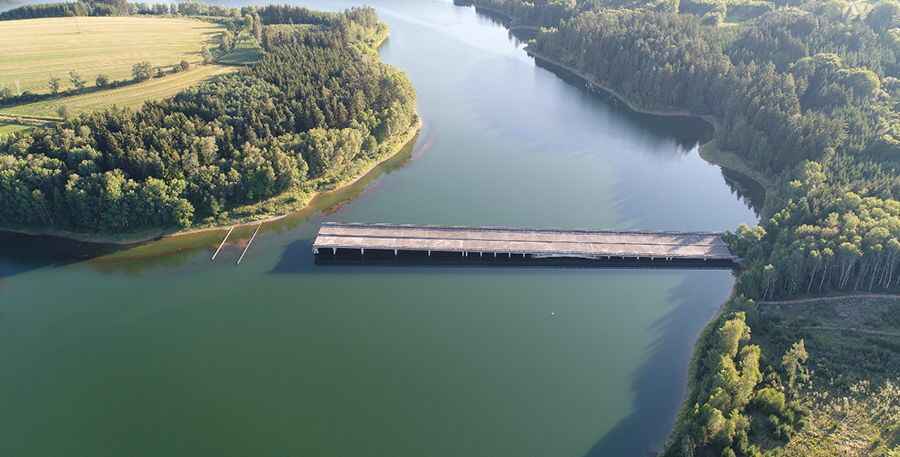The unfinished Borovsko Bridge (or Hitler's Bridge)
Borovský most is an unfinished highway bridge located in the Czech Republic crossing the Sedlický River. The highway itself leading south from Prague was never finished, leaving the bridge marooned.

Where is Hitler's bridge?
The bridge is located in Borovnice, in the Benešov District in the Central Bohemian Region of the Czech Republic. It is one of the most spectacular bridges in the world.
When was Hitler's bridge built?
The construction of the 100-meter-tall Borovsko Bridge, part of the "Reichsautobahn" project initiated by Adolf Hitler during World War II, commenced in 1939 near Borovsko. It was planned to be a segment of the Transeuropean Corridor road network. Despite the interruption of most civil engineering projects in Czechoslovakia following the German invasion of the Soviet Union in 1941, materials were still allocated for the bridge's construction as the war effort continued. However, construction was halted after the assassination of Reinhard Heydrich, the Nazi overlord of Czechoslovakia. Under the subsequent Communist regime post-World War II, construction of the bridge resumed, albeit with a focus on heavy industry and railways rather than automobile travel. The bridge itself was finally completed by the end of 1950 and officially approved by authorities in 1952. However, highway construction was suspended in the 1950s, leaving the rampart at the southern end unfinished, and subsequently, the bridge was abandoned. In 1976, it was inundated by the reservoir created for drinking water, submerging vast sections of the Borovsko Bridge up to the roadway. Today, the Borovsko Bridge, along with the Sedmpanský Bridge, stands abandoned, as do the routes a few kilometers west and east from their location.
Can you drive the Hitler's bridge?
The bridge, also known as Czech Avignon or Hitler's Bridge, stands as a relic of the Nazi regime's ambitions. The surface of the bridge is concrete. The bridge rests unseen in the middle of forests of the Bohemian-Moravian Highland as the whole lake district is a forbidden area and entry is strictly prohibited due to water reservoir protection. It serves as a reminder of the impact of World War II on infrastructure development in Europe and the remnants of Nazi architecture in the region.